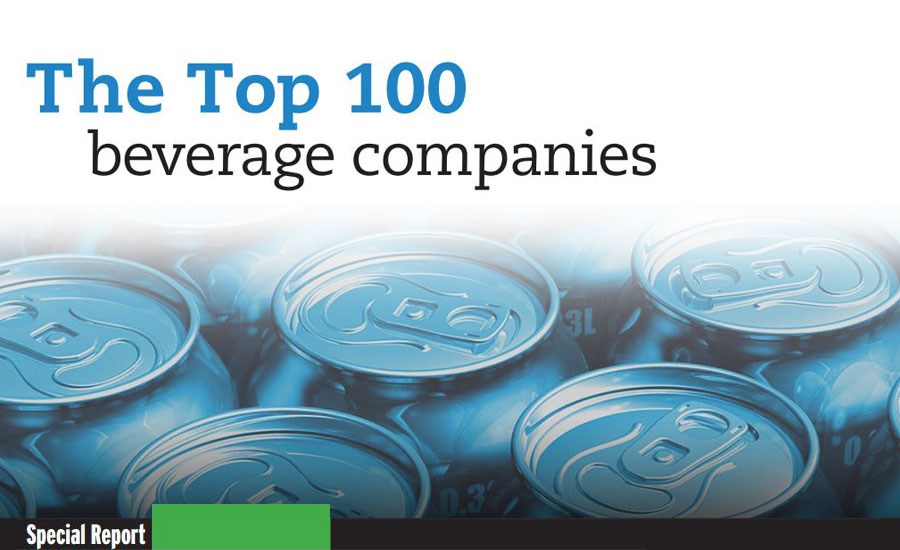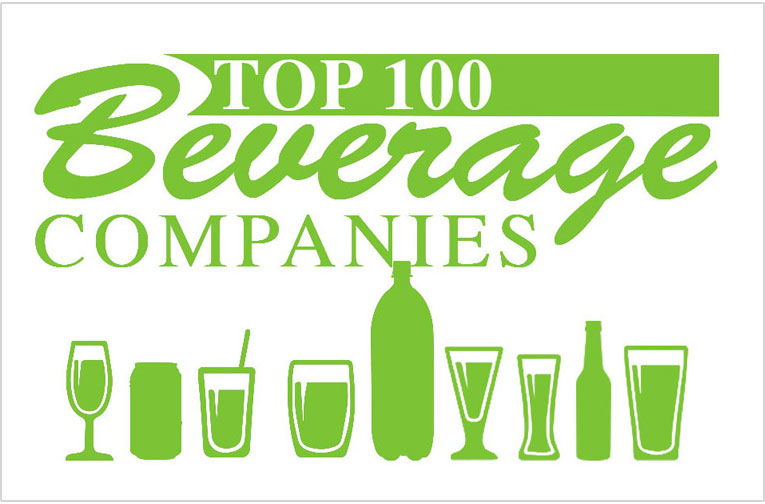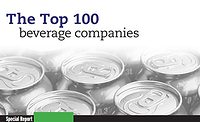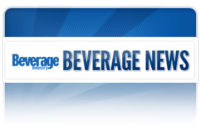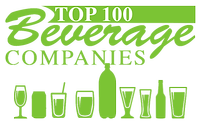1.The Coca-Cola Co.
From job cuts throughout North America in the beginning of the year to anti-American sentiment bringing down sales across the globe, The Coca-Cola Co. experienced a turbulent 2003. In the United States, the loss of 1,000 jobs and reorganization of the company’s bottle/can, fountain and Minute Maid product divisions were only part of the challenges Coca-Cola faced in 2003. The company also experienced a number of organizational changes, naming Steve Heyer president and chief operating officer, and Daniel Palumbo chief marketing officer, and later, senior vice president in 2003. And Chairman Doug Daft’s imminent retirement from the company this year will lead to a takeover by Coke veteran E. Neville Isdell.
Although 2003 wasn’t as profitable as the company would have hoped, 2004 started with the company reporting 2 percent gains in sales compared with results in 2002 due to Vanilla Coke, Diet Vanilla Coke and Diet Coke as well as continued success of the Fridge Pack, according to the company.
Year-end 2003 figures show that Coca-Cola’s overall sales slipped 4 percent, with positive results of 2.5 percent reported in the drug category. While Coke with Lemon took a hit in 2003, Coke’s cherry and vanilla renditions picked up some of the slack, and the introduction of Sprite Remix gave the company and the category a boost in 2003. It also contributed to Sprite’s trademark volume increase of 4 percent, according to Coca-Cola. Diet Coke with Lime, introduced early this year, has given the brand more attention, while its C2, a mid-calorie rival to Pepsi Edge, is expected to attract health-conscious consumers with its unique taste and fewer calories.
View the rest of the rankings
2. Nestlé SA
It was a turbulent year for Nestlé and its beverage business — currency fluctuations, lawsuits, and the promise of a new competitor in the European bottled water market where it’s a major player, factored into creating a challenging environment for the beverage industry giant in 2003. Despite this and despite a sales slump in the first quarter, Nestlé posted a sales increase of 6.3 percent for the year and met its own growth targets.
Sales were buoyed by an extraordinary heat wave in Europe that spiked bottled water consumption, most notably in France, Italy and the United Kingdom. Nestlé Waters remained a stalwart contributor to growth for the company, maintaining growth for the third year in a row.
Even though Nestlé’s water business grew in North America, it was plagued by a couple of lawsuits. One, a class action suit, questioned the integrity of Nestlé’s Poland Spring brand of bottled water. The other claimed that Nestlé’s Ice Mountain Spring Water Co. was causing environmental problems in Michigan. Nestlé lost both suits, but is appealing the latter and has been granted a stay of execution that will keep its Ice Mountain operation flowing.
Nestlé strengthened its position in the home and office delivery segment in Europe and Russia with the acquisition of the Powwow Co., the leading player in Europe, and Clear Water, which serves the greater Moscow area. Meanwhile, growth in the HOD segment in North America was flat. Expansion of Nestlé branded bottled waters continued with solid growth rates.
Healthy ingredients took center stage in new products — Nestlé Water launched in Germany with ginseng and herbs, and the chocolate malt beverage, Milo, was fortified with the new branded ingredient Actigen-E. Growth in soluble coffee and chocolate/malt beverages continued in emerging markets.
3. Diageo
Leading the charge in the spirits category, Diageo came out of a challenging year on top. Setting goals to fully integrate Seagram brands into its portfolio, improve route to market and enhance brand positioning, the company made progress in 2003. In addition to increasing its net sales by 4 percent in the premium drinks category, it fully integrated Seagram brands into the company portfolio. Popular brands in the ready-to-drink category include Smirnoff Ice, Smirnoff Black Ice, Smirnoff Triple Black, and more recently, Smirnoff Twisted V. Other company brands include Guinness, Jose Cuervo, Captain Morgan and Sterling Vineyards wines. The acquisition of Seagram also has given Diageo a new sales channel in South Korea and in the United States. Affected by economic challenges in Latin America, the company expects its North American, Great Britain and Spanish business to bring it more sustained growth in the future. Beginning in July, the company will restructure its joint venture agreement with Moet Hennessy, the wine and spirits division of LVMH. As a result of the changes, Schieffelin & Somerset will be dedicated to Moet Hennessy’s Marnier Lapostolle and Rufino brands, while Diageo brands currently managed by Schieffelin & Somerset will be managed by Diageo North America. Other company news includes the introduction of low-carb wine and zero-carb content advertising for its Smirnoff vodka, Crown Royal, Johnnie Walker and Tanqueray brands. Additionally, the company’s North American office is going to move its corporate headquarters to Norwalk, Conn., in early 2005.
4. Anheuser-Busch Inc.
The world's largest brewer makes more than 30 beers, including Bud Light, Michelob and Busch. Its focus is on the premium and specialty beer sector, resulting in ownership of malt and specialty brews, investment in many small breweries and licensing agreements with international brewers to bring new brands to U.S. consumers. In addition to brewing Japanese Kirin Brewery’s beers in the United States, its specialty brews include Tequiza, “Doc’s” Hard Lemon and Redhook products. Although Anheuser Busch sells its products in more than 80 countries, its presence abroad is minimal compared with other international brewers. It does own breweries in the United Kingdom and China and claims approximately 50 percent of Grupo Modelo in Mexico. A-B also recently beat out SABMiller in a bid to acquire the Harbin Brewery Group. In the end, SABMiller sold its 29 percent stake in Harbin Brewery Group to Anheuser-Busch for $1.64 billion. Harbin Brewery’s 13 breweries in Northeastern China had net assets of $1.06 billion in 2003.
Anheuser-Busch maintained top honors as the No. 1 brewer in the United States in 2003. While the introduction of Michelob Ultra set off a chain of followers that ultimately gave the U.S. beer market an innovation and sales boost in 2003, the brand had a cannibalistic effect on core portfolio player Bud Light. In 2003, the company also launched Bacardi Silver Raz, the raspberry-flavored sibling of the Bacardi Silver O3 orange-flavored malternative, and World Select, Anheuser-Busch’s pilsner beer. In addition to implementing cost-controlling measures by “removing barriers between brewers, wholesalers and retailers,” Anheuser Busch’s “Brewery of the Future” initiative is expected to help the company produce more beer using fewer resources in 2004.
5. Heineken NV
The struggling beer market posed interesting challenges for Heineken not only in the United States, but across the globe. Although the brewer found the American market to be disappointing, it managed to increase its market share, introduce new packaging and expand its distribution reach. On the international front, its decision to acquire BBAG was solidified during 2003 and completely integrated into the Heineken fold. Operating under the name Brau Union, the combination of companies makes it the largest brewer in Central Europe. Additionally, the acquisition further strengthens Heineken’s strategy to advance business development in countries such as China, the world’s biggest beer market, where the company currently is brewing Heineken beer as part of its merger with Fraser & Neave to become Heineken Asia Pacific Breweries China.
But that’s only the beginning for the global beer company’s interest in Asia. Early this year, Heineken acquired an interest in Guangdong Brewery Holdings in China, extended brewery operations in Thailand to keep up with demand, and opened a second brewery in Vietnam near Hanoi to add capacity to the brewery near Ho Chi Minh City. More recently, Heineken’s joint venture with Lion Nathan Australia, which has been named Heineken Lion Nathan, will begin sales and distribution of Heineken products in July with potential to brew Heineken and Heineken brand products in Australia.
In addition to driving volume growth in the premium beer segment throughout the world, the company expects to raise prices in several markets this year while cutting costs wherever possible. Like many global players, Heineken will continue to see its earnings affected by continuing changes in currency. However it plans to focus on its brand portfolio and distribution structure to overcome these challenges in the future. Leading the portfolio is Heineken brand beer, accounting for a 4.3 percent increase in global sales. Amstel beer volume sales also increased during 2003, with Amstel Light sales in the United States contributing to the gains. Europe proved to be a strong market for Heineken due to warm temperatures throughout the summer and improved sales mix.
6. PepsiCo Inc.
The Pepsi-Cola Co. had a bustling 2003 filled with product launches and organizational changes. Beginning the summer selling season with limited-edition Mountain Dew LiveWire and launching Vanilla Pepsi at the end of the summer, the Purchase, N.Y.-based company recorded positive sales results in all channels, except for mass merchandise, according to IRI and ACNielsen.
Introduced in August, Pepsi Vanilla and Diet Pepsi Vanilla had Smith Barney analysts predicting that consumption in the vanilla cola category would continue to expand based on its 2003 performance. And the most recent decision to launch Pepsi Edge, a mid-calorie cola, will have analysts watching this category closely in 2004.
In other company news, Pepsi decided to capitalize on the success of tea during 2003 and entered into a joint agreement with Unilever to market and distribute Lipton ready-to-drink teas. Pepsi Lipton International builds on the partnership formed early in the 1990s as a way to enhance portfolio strength for the two companies. Additionally, its purchase of The Quaker Oats Co. and its Gatorade brand gave the company a leading role in the noncarbonated beverage category with Gatorade being added to the Tropicana, All Sport, and Lipton tea brands. This year, the company has reportedly been in talks with juice company Ocean Spray to create a second beverage joint venture. Toward the end of 2003, PepsiCo announced it was dividing its North American operations into three core businesses. It proceeded to cut 750 jobs while consolidating into Pepsi-Cola, Gatorade and juice divisions to streamline manufacturing and supply chain operations. The creation of five subdivisions in its North American operations is expected to result in more job cuts in 2004.
7. Interbrew
Interbrew had a strong 2003 in the global beverage arena. Its net sales of beverages increased 0.7 percent last year over 2002, according to the company’s annual report. Additionally, Chief Executive Officer John Brock claimed in a recent release that the company’s focus on operational performance resulted in organic volume growth three times the industry average. Other 2003 highlights for the company included strong global performance by Stella Artois and Beck’s, and share gains in markets such as Western, Central and Eastern Europe. Beck’s products faired particularly well in Germany, where the brand grew by more than 11 percent. And Stella Artois took the United Kingdom premium segment by storm, accounting for a more than 12 percent volume increase. While the Americas produced weak numbers for Interbrew brands due to a slowing growth rate in sales of imports in the United States and a brewery strike in Canada, the company managed to acquire Bass Ale, and it introduced a new marketing and management structure for Beck’s in the United States. Central and Eastern Europe accounted for more than 20 percent of the company’s organic volume growth as a result of cost management and turnaround of business in countries such as Russia, Bulgaria and Romania.
Interbrew acquired a 70 percent stake in the K.K. Group located in the Yangtze delta in November 2002 and completed the transaction in April, which added 2.3 million hectoliters of production and gave the company larger representation in China’s Southeastern coastal region. Interbrew more recently closed an agreement with the Malaysian Lion Group, acquiring a controlling interest in Lion Group’s beer business in China. The company also took a majority stake in Apatinska Pivara Apatin, the largest brewer in Serbia, and began the acquisition process with Gabriel Sedimayr Spaten-Franziskaner Brau KgaA (Spaten Brewery) in Germany, which is expected to close this year. In other acquisition activity, the company has picked Brazilian brewer AmBev as its next conquest to become the world’s largest brewer, a merger still to be completed.
8. Suntory International Corp.
Suntory’s operations in the United States include importation of wine, beer, spirits and other non-alcoholic beverages from Japan as well as a 65 percent investment in Pepsi Bottling Ventures and a new joint venture with Danone — DS Waters of America.
DS Waters combines the operations of the Suntory Water Group and Danone’s U.S. home office delivery business. Each company holds a 50 percent stake in the venture that is said to be the largest HOD operation in the world with annual revenues estimated in excess of $800 million. Brands marketed by the company include Crystal Springs, Sparkletts and Alhambra.
On an international basis, Suntory Ltd. reported that its group net profit rose 13.3 percent in 2003. Despite the profit growth, economic woes, a tax hike on low-malt beverage products and a cooler than normal summer in Japan depressed overall sales. Sales of beer and low-alcohol malt beverages were down 6 percent and sales of whisky, wine and other liquors were down as well. Relatively high unemployment and continued deflation pushed consumers away from more pricey drinks toward local brews and FABs.
During the year, Suntory established a subsidiary in Taiwan where a distributor previously represented it, and it announced plans to build a new factory in China. The plant in Shanghai is expected to be operational in 2005, and Suntory will hold an 80 percent stake in the venture.
New products include a white peach flavor of Calori — a reduced-calorie, reduced-sugar version of the company’s successful CHU-HI beverage. Another healthy addition to the beverage line-up is Catechin-Shiki, a green tea.
9. SABMiller plc
SABMiller’s transformation from an African brewer to an international conglomerate is progressing, albeit slowly, as it tries to turnaround Miller Brewing’s U.S. business. A management shift at the beginning of the year brought Norman Adami to the United States as president and chief executive of Miller Brewing. The SAB executive replaced John Bowlin, who came on board with the acquisition from Kraft/Philip Morris. A restructuring was announced mid-year that reduced corporate staff by 200.
While Miller’s year-long commitment to reinvigorate its Miller Lite Beer in the United States with a new logo and advertising saw some success, its growth was offset with weakness elsewhere in the domestic beer market. The company claimed that U.S. beer volumes were affected by low consumer confidence, a lackluster economy and world events. It was frank in its annual report, saying, “certain of Miller’s core brands have been losing market share for a number of years. However the rate of decline increased over the past year, and we believe this to be due to a combination of factors including loss of management focus on core brands following the introduction of four FMBs and some understandable disruption during the transaction and subsequent integration into SABMiller “
Several of the aforementioned FMBs were scaled back early in the year and eventually dropped. The sole survivor is Skyy Blue. According to the company, Skyy Blue is the fourth-largest spirits-branded FMB in the United States. Meanwhile, the Miller brand was launched in Central and Eastern Europe as well as into South Africa. SABMiller’s launch of Pilsner Urquell and Miller Genuine Draft into South Africa replaced Heineken as the company’s entry in the premium beer sector. SAB had to sever its ties with Heineken when it acquired Miller Brewing.
The SABMiller group is taking a long view on its integration of Miller, saying last spring that rebuilding the brands and repositioning would take 18 months. During this time, the company will strengthen sales and distribution based on experience in other parts of SABMiller. The company said it expects that Miller’s profitability will be affected over the next two to three years by the current volume declines, adverse mix effects and reorganization and restructuring.
10. Allied Domecq
Allied Domecq reported 6 percent volume and value growth for 2003. The world’s second-largest wine and spirits group said its growth came from increasing the gross margin of its spirits and wine business, notably through its core brands and premium wine. The North American market led the growth in spirits and wine, followed by a recovery in the Spanish market along with strong wine sales there. These gains were partially offset by declines in Asia Pacific and Latin America.
The company divides its portfolio into four groups: core brands, local market leaders, premium wine and other spirits and wine brands. A 10 percent increase in advertising and promotion pushed growth in core brands. Global brand’s such as Ballantine’s, Beefeater, Canadian Club, Malibu, Kahlua and Sauza make up the core brands for Allied.
On the management front, Allied Domecq named Jim Clerkin, president of its North American division. Clerkin replaces Tom Wilen as president and is the third chief executive for the division in as many years.
Going after the coveted 21- to 29-year-old market, Allied introduced Kuya Fusion Rum under the Kahlua trademark into the U S. market. The rum has spices and citrus flavor. Continuing to capitalize on the growth of flavored vodka, Allied launched two new flavors of Stolichnaya vodka, Stoli Cranberi and Stoli Citros. Another flavorful extension is Beefeater Wet, a pear-flavored gin. The company also launched two ready-to-drink, pre-mixed cocktails under the Sauza label — Premium Original Margaritas and Premium Strawberry Margaritas.
In other product news in the United States, Allied Domecq gave a license to American Beverage Corp. to produce a line of non-alcoholic cocktail mixers using its brand names. Initial offerings include Kahlua Mudslide, Sauza Tequila Traditional Margarita and Malibu Rum Pina Colada. The company also extended nationally its initial launch of Hiram Walker Fruja flavored liqueur.
Premium wine brands volume declined but net turnover increased, reflecting a strong price/mix improvement. The Clos du Bois brand is the primary growth driver in the United States with volumes up 18 percent. Clos du Bois launched a wine named after Jerry Garcia of Grateful Dead fame, and featuring the singer’s artwork. Its first release was sold out. Another strong performer was Mumm Cuvee Napa champagne with volumes up 16 percent.
| Top bottlers and distributors | ||
| COMPANY | LOCATION | 2003 SALES |
| Coca-Cola Enterprises | Atlanta, Ga. | 17,330 |
| The Pepsi-Cola Bottling Group | Somers, N.Y. | 10,265*** |
| Southern Wine & Spirits of America | Miami, Fla. | 4,400 |
| Pepsi Americas | Rolling Meadows, Ill. | 3,237 |
| Coca-Cola FEMSA | Monterey, Mexico | 3,178** |
| Dr Pepper/Seven Up Bottling Group | Dallas, texas | 1,820* |
| National Distributing Co. Inc. | Atlanta, Ga. | 1,450 |
| Glazer's Wholesale Drug Co. | Dallas, Texas | 1615* |
| Young's Market Co. | Orange, Calif. | 1155* |
| Coca-Cola Bottling Co. Consolidated | Charlotte, N.C. | 1,211 |
| Honickman Affiliates | Pennsauken, N.J. | 983 |
| National Wine & Spirits Inc. | Indianapolis, Ind. | 690 |
| Swire Pacific Holdings | Draper, Utah | 635* |
| Buffalo Rock Co. | Birmingham, Ala. | 446 |
| Coca-Cola Bottlers | Puerto Rico | 300* |
| Charmer-Sunbelt Beverage Corp. | New york, n.y. | 1240* |
| Charmer Industries | Astoria, N.Y. | 785* |
| Georgia Crown Distributing Co. | Columbus, Ga. | 730* |
| Peerless Importers Inc. | Brooklyn, N.Y. | 690* |
| Johnson Brothers Wholesale Liquor |
St. Paul, Minn. | 574* |
| *estimate ** Coca-Cola FEMSA, S.A. de C.V. purchased Panamerican Beverages Inc. in May 2003 for $3.6 billion ***The Pepsi-Cola Bottling Group acquired Pepsi Gemex in Dec 2002. Sales in millions U.S. $ |
||
Top 100 Beverage Companies of 2016
Anheuser-Busch InBev takes back No. 1 spot
